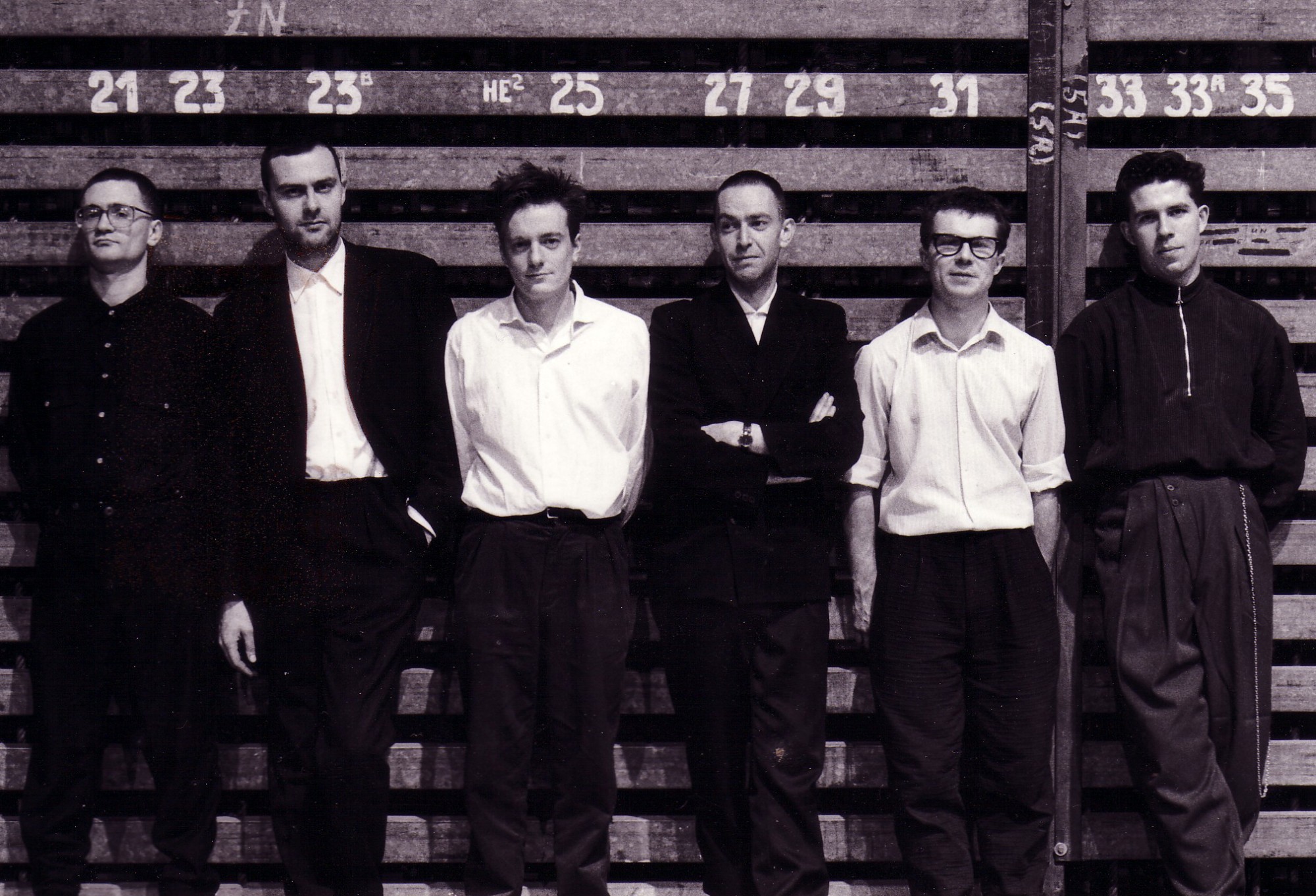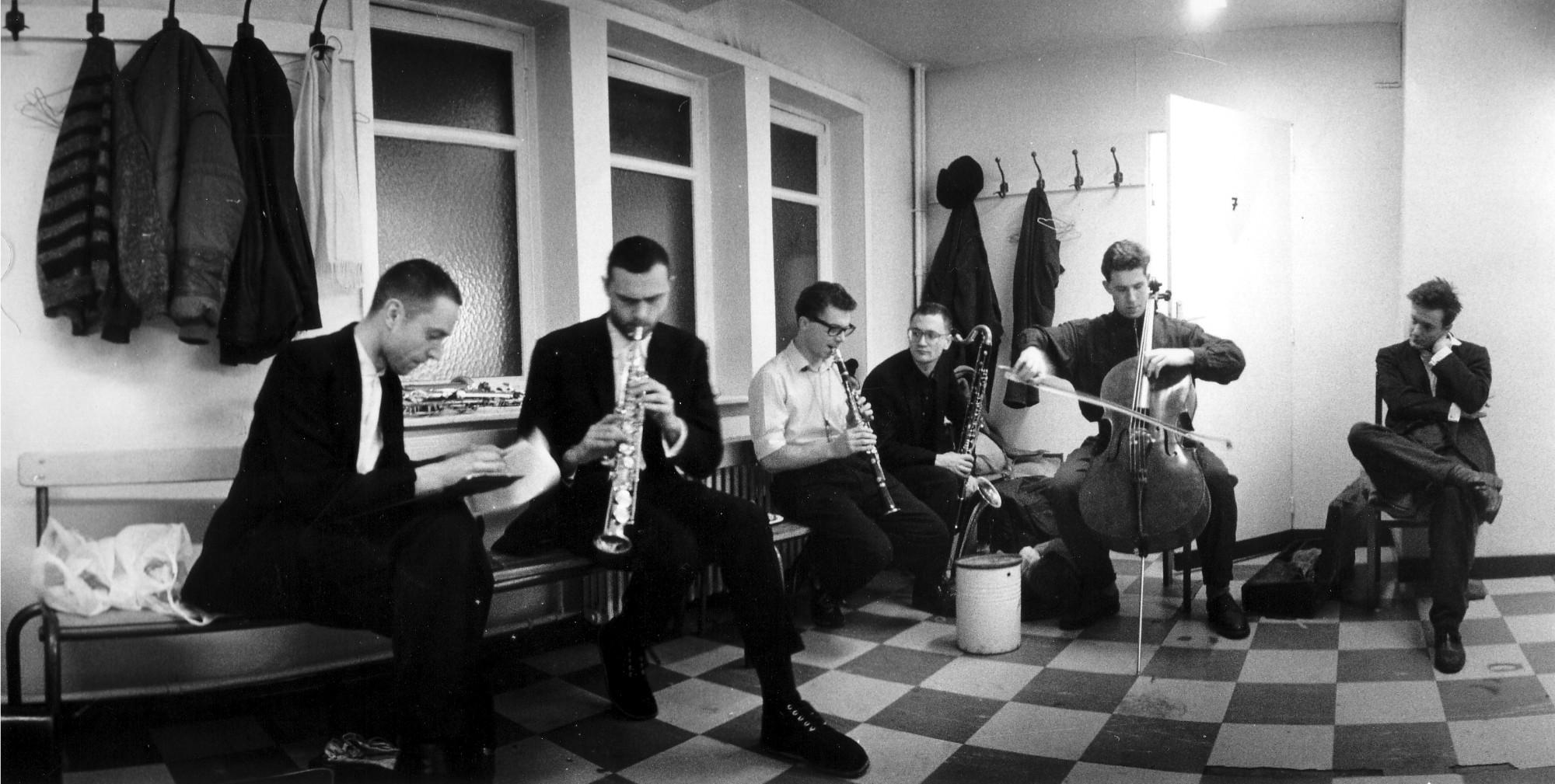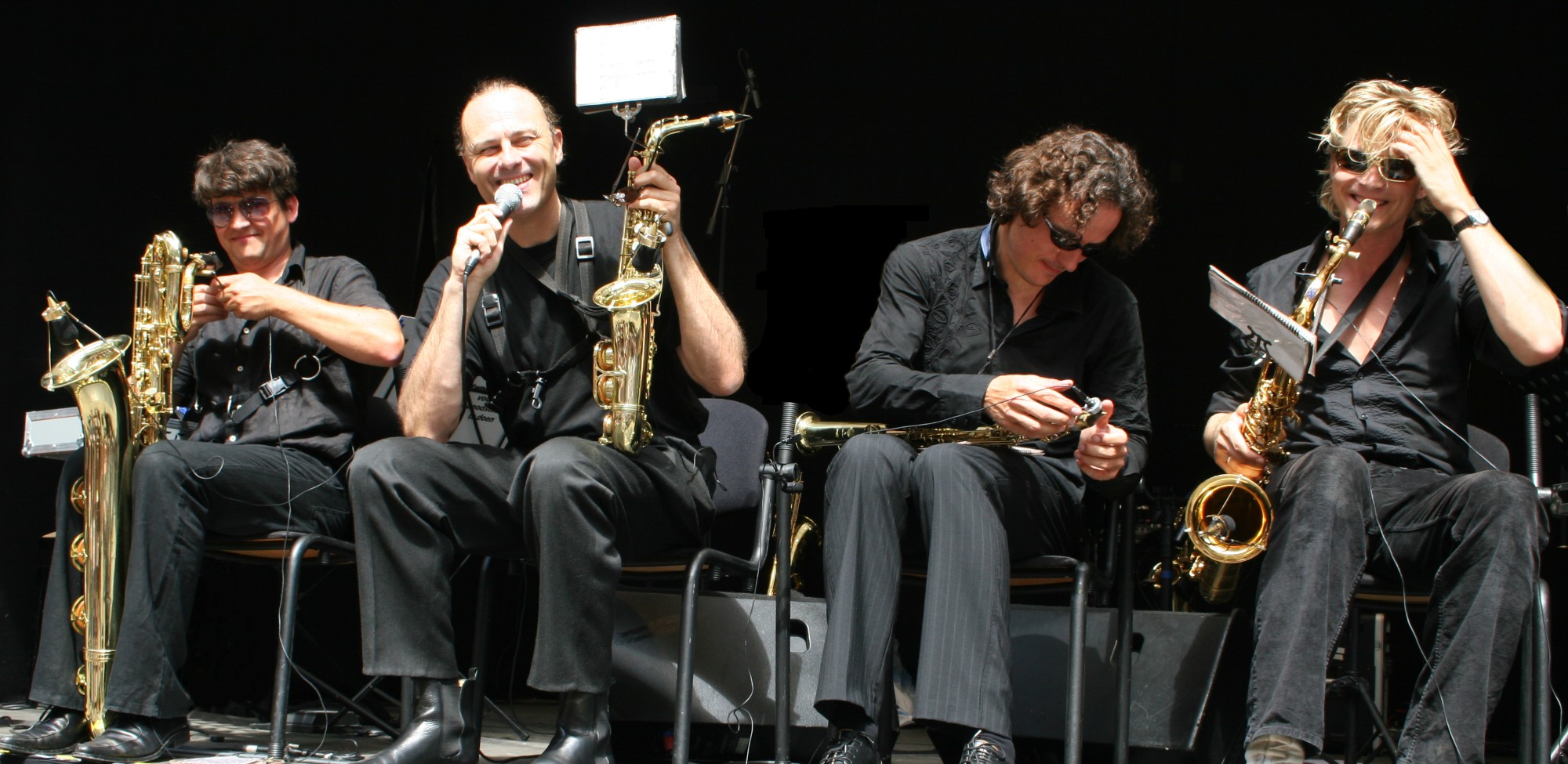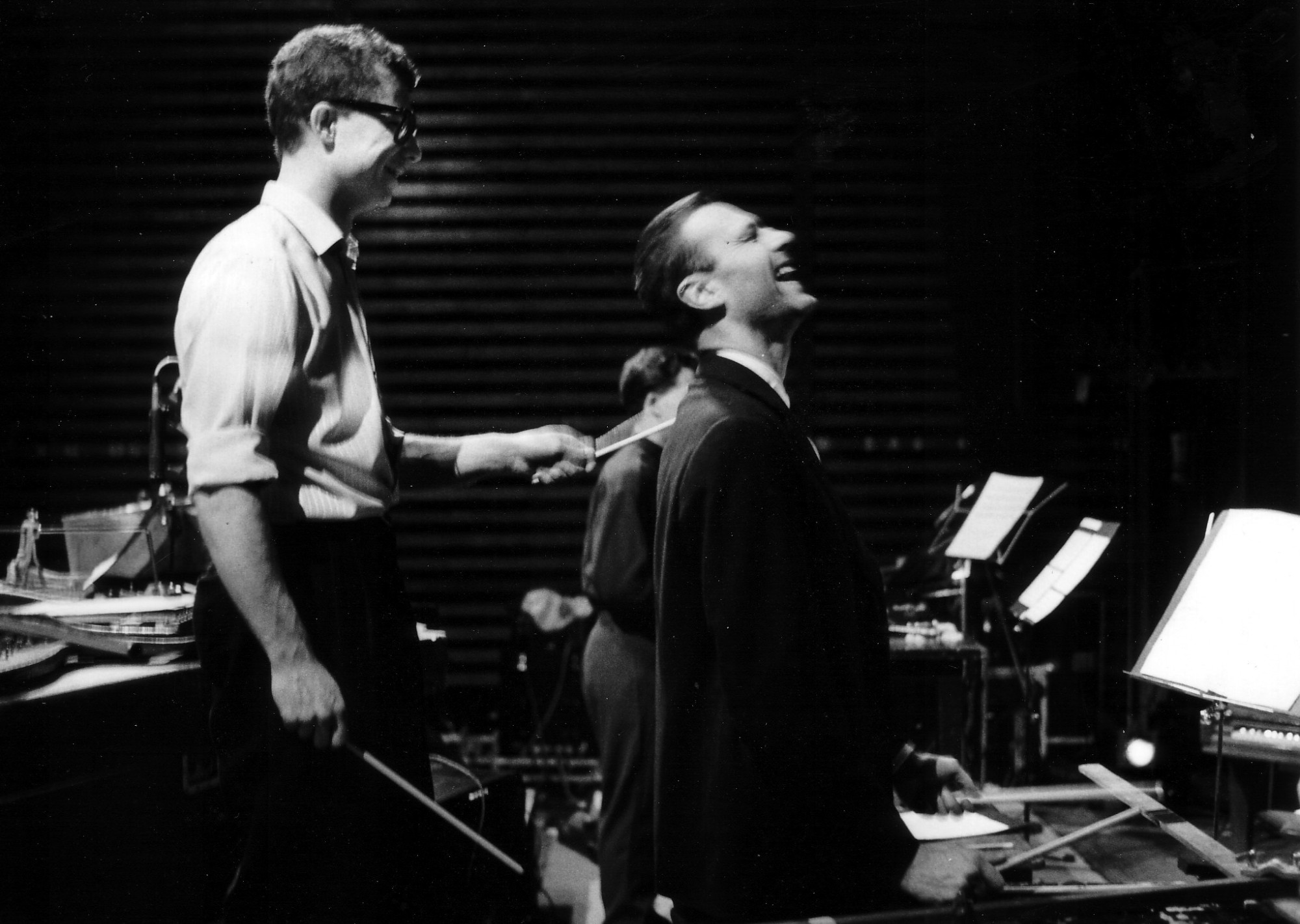MAX!MAL BL!NDMAN
2003: BL!NDMAN’s 15th anniversary, 15 years of unrestrained searching for pioneering possibilities for the saxophone quartet. This flood of unbridled energy and effort started exactly 20 years ago when Maximalist! was founded. A group that created a marvellous playground in which every musical tendency was brought together in regained aesthetic freedom, vigour and poetry.
And then came BL!NDMAN, a laboratory for sound experiments and a meeting place for every artistic discipline. The saxophones’ rediscovery of Bach’s choral partitas and the profound experience of Leoninus’ organa to the chromaticism of Lassus fundamentally enriched the ensemble’s musical practice.
After 15 years BL!NDMAN is casting a symbolic glance back at Maximalist!, that pride of young lions who hurled their music onto international stages with the attitude of rock musicians. This exuberant energy is to be found more than ever in this concert.
Eric Sleichim: artistic direction, transcriptions and arrangements
BL!NDMAN [sax]
Koen Maas: soprano saxophone, mirrors, metal bars, table
Roeland Vanhoorne: alto & baritone saxophone, foam, bass, cowbells, table
Piet Rebel: tenor & baritone saxophone, piano frames, steel drum, table
Raf Minten: tenor & baritone saxophone, piano frames, steel drum, table
BL!NDMAN [drums]
Yves Goemaere: piano & wood blocks
Hannes Nieuwlaet: loop & wood blocks
Fabian Coomans: piano
MAX!MAL BL!NDMAN is a BL!NDMAN production commissioned by the Festival Van Vlaanderen-Brussel, with the support of the Festival van Vlaanderen-Mechelen and the Cultuurcentrum Genk. Thanks to the Maximalists, and to Thierry De Mey in particular.




Programme
Thierry De Mey / Peter Vermeersch: Contre Six
Walter Hus: Five to Five
Peter Vermeersch: Scrum
Eric Sleichim: Lié / Délié
Thierry De Mey: Musique de Tables
Thierry De Mey / Peter Vermeersch: Habanera
Thierry De Mey: Balatum
Press
‘Even after almost twenty years this music continues to radiate enormous power. … This is a classic repertoire. It is important that it be performed. And it is even more important that the Maximalist! ideas live on: that young composers appear who have the nerve to do their own thing with no regard for convention.‘
Maarten Beirens, De Standaard
‘BL!NDMAN is a collection of brilliant, tremendously precise exegetes, who hear and reproduce with perfection the gestural power of music, which they interpret as a kind of rhythmical ballet, reproducing not merely sounds but also movements. The visible movements begin only when the traditional sound vocabulary is abandoned in favour of a rhythmical interlocking of tapping with the fingers, backhand chops, scraping, bowing and silence, which combine to generate music.‘
Tim Gorbauch, Frankfurter Rundschau
‘20 years after its creation, the music of Maximalist! is still very rock’n’roll.‘
Xavier Flament, Le Soir
‘Recent years have been one big party in BL!NDMAN country. Each new project has led to discoveries for the musicians and surprises for the listeners.‘
Elke Vandersypen, Muziek & Woord
‘With all the concentration of high-precision Swiss watches, the BL!NDMAN ensemble bring in the different rhythms of their individual voices to create a complex sound structure. Playing this music demands not only that every player has a perfect mastery of their own particular instrument, but also that every player should be an outstanding percussionist.‘
Christian Hoesch, Frankfurter Allgemeine Zeitung
‘Maximalist! was set up twenty years ago by four young musicians who let their energies flow, and the rest is history.‘
Lucas Huybrechts, Knack
‘In 2003 the internationally celebrated Brussels saxophone quartet BL!NDMAN celebrated its 15th anniversary. Throughout that time the ensemble has been on a remarkable and fascinating quest. BL!NDMAN have more than anyone else claimed considerable autonomy for the saxophone.‘
Peter-Paul De Temmerman, Financieel Economische Tijd
Agenda
MAXIMALIST! (1984-1989)
Brussels, the beginning of the eighties: a time of effervescence, a state of constant tension, the lure of the radical aesthetic tabula rasa … it marks the emergence of a generation of artists determined to start from scratch… They care more about what’s happening here and now (on stage) than with anything that may lie behind it… They no longer have any illusions about the mind-blowing trip of the seventies or about modernist academism; above all, they urgently want to put the body back at the heart of their endeavours (no wonder the choreographers are in the vanguard!). They are not yet aware of their main asset: with no hang-ups, they cross the boundaries of style and genre to create real interdisciplinary practices. In the field of dance, this has often been called ‘the Belgian wave’, but there is a musical side too, and its hard core was to be found in the group of musician-composers who called themselves MAXIMALIST! For Rosas danst rosas (1983), the choreographic work that thrust her to the forefront of the international stage, Anne Teresa de Keersmaeker turned to two young composers, Thierry De Mey and Peter Vermeersch. The unrelentingly formal plan resembles a game of Go; the repetitive aesthetic has a vigorous muscularity. The same duo wrote the music for What the body does not remember, the first show by Wim Vandekeybus, which won them the Bessie Award, the American critics’ prize. While Thierry De Mey went on to write for the choreographer Michèle Anne De Mey and for the Japanese fashion designer Rei Kawakubo, Walter Hus’ services were required by Roxane Huilman and Yamamoto. Eric Sleichim, exploring the new sonorities of the saxophone, began his dialogue with the visual arts by opening the legendary Chambres d’amis exhibition in Ghent and Documenta in Kassel. They were joined by François Deppe (cello), Dirk Descheemaeker (clarinets) and Jean-Luc Plouvier (piano), who are today eminent members of the ICTUS Ensemble, and by Jean-Paul Dessy (cello), who is now director of the Ensemble Musiques Nouvelles. For five years they covered the contemporary music scene from rock to dance festivals, appealing to the most varied of audiences. The sound of the amplified acoustic instruments was very powerful. Their compositional systems, clearly inspired by the Franco-Flemish polyphonists of the fifteenth century (labyrinthine canons, prolations, palindromes and hockets), in no way excluded the desire to get people moving, to get them dancing.
Text by Thierry De Mey
The works
Thierry De Mey / Peter Vermeersch: Contre Six 2 pianos, saxophone quartet and loop
Arranged in a loop, a rhythmic six-eight theme encloses the sometimes austere and harsh, sometimes voluble and exuberant progression of the different tone combinations: the instruments joining together within other rhythmic beats (5, 7, etc.) clashing with the metre repeated by the machine, hence the title Counter Six.
Walter Hus: Five to Five 2 pianos and saxophone quartet
Five to Five was originally written for a Yamamoto fashion-show in Brussels. It was Hus’ very first composition and shows the influence of minimal music in its obsessive use of repetitive cells but at the same time the abundant stream of melodies, the contrapuntal concept and the dramatic build-up resist the “minimal” label. The title refers to a superimposition of several combinations of the number five.
Peter Vermeersch: Scrum tenor saxophone
The rugby scrum is that indecisive and confused moment in a match when the two opposing packs confront each other shoulder to shoulder. Two forces expressing themselves in opposite directions, cancelling each other out: a metaphoric title for this piece referring to the clash between the different voices merging in one instrument.
Eric Sleichim: Lié / Délié saxophone-quartet in 3 movements
First saxophone-quartet written by Eric Sleichim for BL!NDMAN. It was played by Maximalist! with three saxophones and cello. In movement 1 the baritone saxophone plays in circular breathing the recurrent basic theme (Tied). The second movement stands for the fragmentation of the thematic into repetitive cells (Untied). Movement 3 decomposes the lines until everything falls apart (Pieces).
Thierry De Mey: Musique de Tables 3 tables
Composed for three percussionists who each use a little table as their musical instrument. The diversity of tones is produced by striking the tables in different ways. The position of fingers and hands, the rhythmic figures are coded in a repertoire of original symbols introduced into the score. The idea of Musique de tables is to trace the link between the music and the gesture that produces the sound, and to pinpoint the demarcation line between dance and music: the visual and choreographic aspects are on the same plane of importance as the tones and the musicality of the performances.
Thierry De Mey / Peter Vermeersch: Habanera 2 pianos and saxophone quartet (14‘)
This piece, written for the finale of Anne Teresa De Keersmaeker’s choreographic work Rosas danst Rosas marks the beginning of Thierry de Mey’s collaboration with this choreographer. The rhythmic theme of the Habanera is deconstructed in this piece and presented in the form of ostinato continuously reiterated in gradual shifts, on which different compositional processes (accumulation, canon, hockets, interpolation, etc.) are linked together. The implacable rigour of the musical forms, a real “structural wall”, is designed to be used as a springboard for the physical involvement of the performers.
Thierry De Mey:* Balatum* mirrors, polystyrene foam, bass, cowbells, piano frame, steel drum, metallic sheers and wood blocks
A piece written for the first choreographic work by Michèle-Anne De Mey. An original range of instruments is used for these constructions/deconstructions of geometrical themes that link together and entwine like tresses: a playful puzzle of continuously moving shapes.


